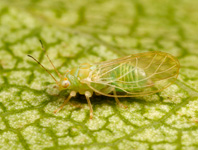Abstract
Pangrapta is a large and morphologically rather diverse genus, which is widely distributed in the New and the Old Worlds. This genus usually has a dark brown ground color on wing and wing margin is often slightly angled; a majority of species have the triangle patch on the forewing costa between subterminal and postmedial lines; uncus is generally slender and tapering apex; valva tends to be long and narrow; harpe is often spine-shaped; vesica typically has one or more cornuti on the diverticula. As currently, Pangrapta is consisted of about 100 species in the world (Hu & Wang, 2013), which is called for a general revision.
References
Butler, A.G. (1879) Illustrations of typical specimens of Lepidoptera Heterocera in the collection of the British Museum 3. Taylor and Francis, London, 82 pp.
Chen, Y.X. (1999) Fauna Sinica. Lepidoptera: Noctuidae. Science Press, Beijing, 1596 pp.
Hu, Y.Q. & Wang, M. (2013) Two new species of Pangrapta from South China (Lepidoptera, Noctuidae, Pangraptinae). Florida Entomologist, 96 (4), 1284–1287.
https://doi.org/10.1653/024.096.0406
Kishida, Y. (2011) The Standard of Moths in Japan II. Gakken Educational Publishing, Tokyo, 416 pp.
Kononenko, V.S. & Han, H.L. (2007) Atlas Genitalia of Noctuidae in Korea (Lepidoptera). Junghaeng-Sa, Korea, 461 pp.
Staudinger, O. (1888) Neue Noctuiden des Amurgebietes. Entomologische Zeitung, 49, 245–283.

